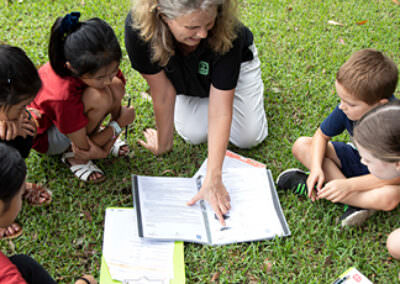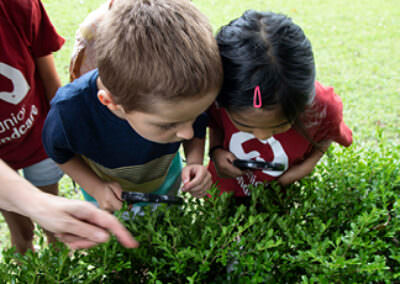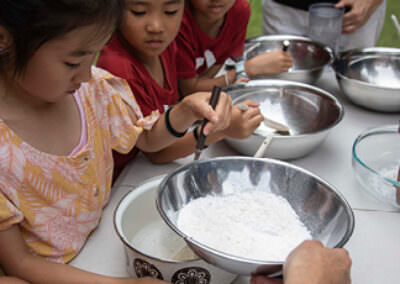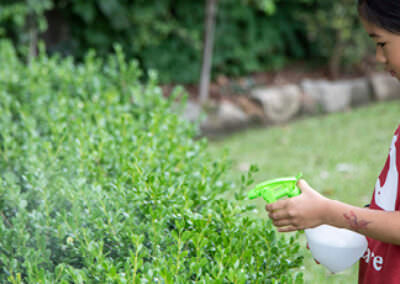
Growing healthy plants using natural pesticides
Time Allocation: 40 minutes*
Activity Level: Easy
Introduction
Having healthy plants is dependent on a variety of factors. Before commencing this activity, be sure to identify the pest species on your plants. Certain pesticides are only suitable to treat specific pest species. The natural pesticide featured in this learning activity is to treat sucking pests such as aphids and scale.
*If all materials have been previously sourced.
Checklist
Instructions
 STEP 1
STEP 1
Provocation
What do plants need to be healthy to grow and create the produce we eat? We have some new plants in our food garden. We would like to have the best results possible from these plants, what can we do to keep them healthy?
Use the activity sheet to help build the discussion.
What does a flowering plant need to grow? Water, sunlight, air, soil, care.
What helps to keep plants healthy? Rich nutrients in the soil, lots of beneficial pollinators, mulch, lots of care, pest and disease control.
What are some of the threats to healthy plants? Pests, disease, weather variations, planting in the wrong season, neglect.
 STEP 2
STEP 2
What is a pesticide? Discuss that a pesticide is a solution created to treat, deter or destroy pests and diseases that attack plants.
Why should we use a natural pesticide? Discuss that while treating plant pests and diseases, we do not want to harm the soil, water sources, other plants, beneficial insects, wildlife or people. Pesticides are often pest species specific.
Discuss how to identify plant pests. Use the online guides or a book for background information.
Aphids and scale are common garden pests so we will look at ways to manage aphids by preparing a solution using environmentally friendly ingredients.
Children can investigate these and other insects in their garden, using magnifying glasses to look up close. Refer to the online and printable resources to learn and help with identification.
 STEP 3
STEP 3
Keep in mind what resources you need to make the natural pesticide. Outline safe practices when using heating utensils and pesticide ingredients.
To create the natural pesticide:
- add two tablespoons of soap flakes to one litre of warm water in a saucepan or in a heatproof bowl.
- stir carefully with a wooden spoon until soap flakes are completely dissolved. Allow time to cool.
Your solution is now ready to be poured into a spray bottle.
 STEP 4
STEP 4
Apply the solution by spraying the top and the underside of each leaf and along the stems. Aphids normally congregate on the underside of the leaf so pay special attention to this area.
The natural pesticide should immediately destroy the garden pests. Reapply should the aphids or scale reappear on your plants.
Children can use the activity sheet to reflect on what actions they will take to monitor plants and assess if the natural pesticide has been effective.
Extension Activity
Investigate companion planting as a way to manage plant pests.
Find out how you can use bugs to control unwanted pests.